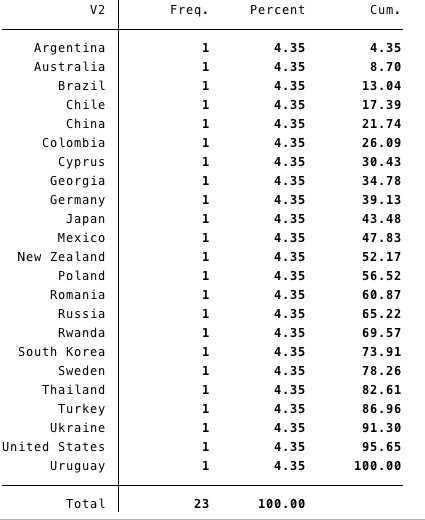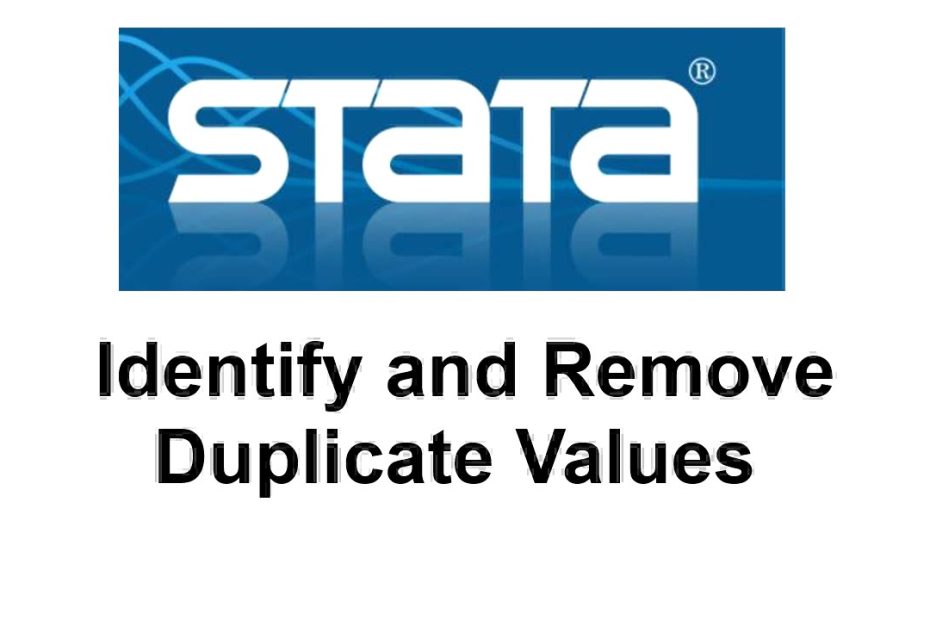You are looking for information on the topic “variable does not uniquely identify observations in the using data”. dongtienvietnam.com will gather information to answer your questions in this article. Please read this article to the end to find the information you want to see. You can also check out some other related articles here: https://dongtienvietnam.com/category/wiki/ matching observations in stata, Variable id does not uniquely identify the observations, variable nace does not uniquely identify observations in the using data, Merge data in Stata, Merge in Stata, Repeated time values within panel, Change variable type stata, Check duplicate in Stata.
View information about the variable does not uniquely identify observations in the using data
Information about this question
- Question: variable does not uniquely identify observations in the using data
- Time: Asked 14 minute ago
- Modified: Asked 23 days ago
- View: 7013
variable does not uniquely identify observations in the using data
When a variable does not uniquely identify observations in a dataset, it means that there are multiple observations with the same value for that variable. This can happen when the variable is not a unique identifier for each observation, or when there are errors or duplications in the data.
For example, if you have a dataset of customer orders and use the variable “order number” as the unique identifier, but there are two or more orders with the same order number, then the variable “order number” does not uniquely identify each observation.
In such cases, it may be necessary to use additional variables or combination of variables to uniquely identify each observation in the dataset. Alternatively, you may need to clean and preprocess the data to remove any duplicates or errors that are causing the issue.
Watch videos related to “variable does not uniquely identify observations in the using data”
8. Stata one to one merge, _merge variable, identifier variable, file types
Images related to variable does not uniquely identify observations in the using data
Found 42 variable does not uniquely identify observations in the using data related images.



matching observations in stata
Matching observations in Stata involves combining two datasets based on a common identifier or key variable. Stata has several commands to accomplish this, including merge, joinby, and append.
The merge command is the most common way to match datasets in Stata. It works by combining the observations from two datasets based on a common variable, which must be present in both datasets. The syntax for merging two datasets is:
sqlmerge 1:1 key_variable using dataset2
where key_variable is the variable used to match the observations and dataset2 is the name of the dataset to be merged. The 1:1 option specifies that each observation in the first dataset can match only one observation in the second dataset based on the key variable.
For example, suppose we have two datasets: data1 and data2. Both datasets contain a variable id that uniquely identifies each observation. We can merge the datasets using the following command:
sqlmerge 1:1 id using data2
This will combine the observations from data1 and data2 based on their id values.
Another command to match observations is joinby. The joinby command is similar to merge, but it allows us to specify multiple key variables to match observations. The syntax for joinby is:
cppjoinby key_variable1 key_variable2 using dataset2
where key_variable1 and key_variable2 are the variables used to match the observations.
Finally, the append command is used to add observations from one dataset to another dataset. This command assumes that the two datasets have the same variables and that the observations in the second dataset are additional observations to be added to the first dataset. The syntax for append is:
goappend using dataset2
where dataset2 is the name of the dataset to be added to the first dataset.
Keep in mind that before merging or appending datasets, you need to make sure that the key variables are correctly formatted and match between the two datasets. You can use the describe command to check the variable names and formats in each dataset.
Variable id does not uniquely identify the observations
The statement “Variable id does not uniquely identify the observations” means that there are multiple observations in the data set that share the same value for the variable “id”. In other words, the “id” variable is not unique and cannot be used as a unique identifier for each observation in the data set.
This can be a problem in data analysis, especially when trying to perform operations or manipulations that require each observation to be uniquely identified. In such cases, it may be necessary to use other variables or combinations of variables to create a unique identifier for each observation.
It is important to carefully examine the data set to understand why the “id” variable is not unique and how this may affect any analyses or conclusions drawn from the data. It may also be necessary to clean or preprocess the data set to ensure that each observation is uniquely identified.
You can see some more information related to variable does not uniquely identify observations in the using data here
- variable date does not uniquely identify observations in the …
- FAQ: Match merging when there are duplicate IDs – Stata
- Data Wrangling in Stata: Combining Data Sets
- Counting from _n to _N – OARC Stats – UCLA
- Unique IDs – Guides – IPA’s Github!
- by, _n, _N – Data Analysis with Stata – Library Guides
- merge 1:1 = variable identh does not uniquely identify … – Reddit
- Error says that variable CLAIM_NUMBER does not uniquely …
- Data Management Using Stata
- Stata tip 142: joinby is the real merge m:m
- setting up the dataset | anzdata
- dmerge joins corresponding observations from the dataset …
- Data Wrangling in Stata: Combining Data Sets
Comments
There are a total of 505 comments on this question.
- 157 comments are great
- 66 great comments
- 285 normal comments
- 115 bad comments
- 5 very bad comments
So you have finished reading the article on the topic variable does not uniquely identify observations in the using data. If you found this article useful, please share it with others. Thank you very much.
